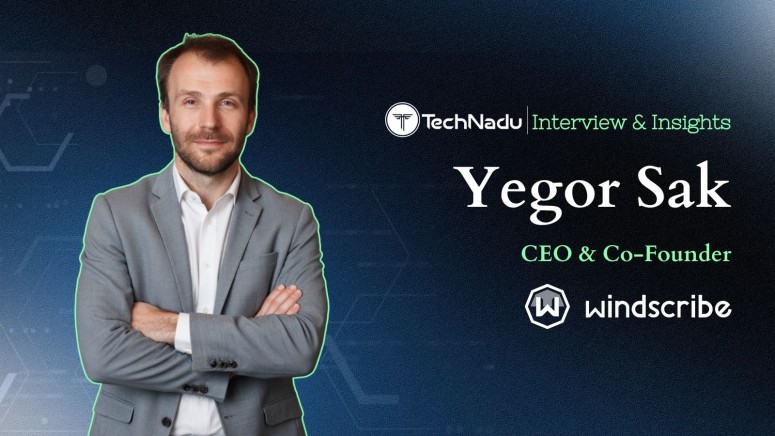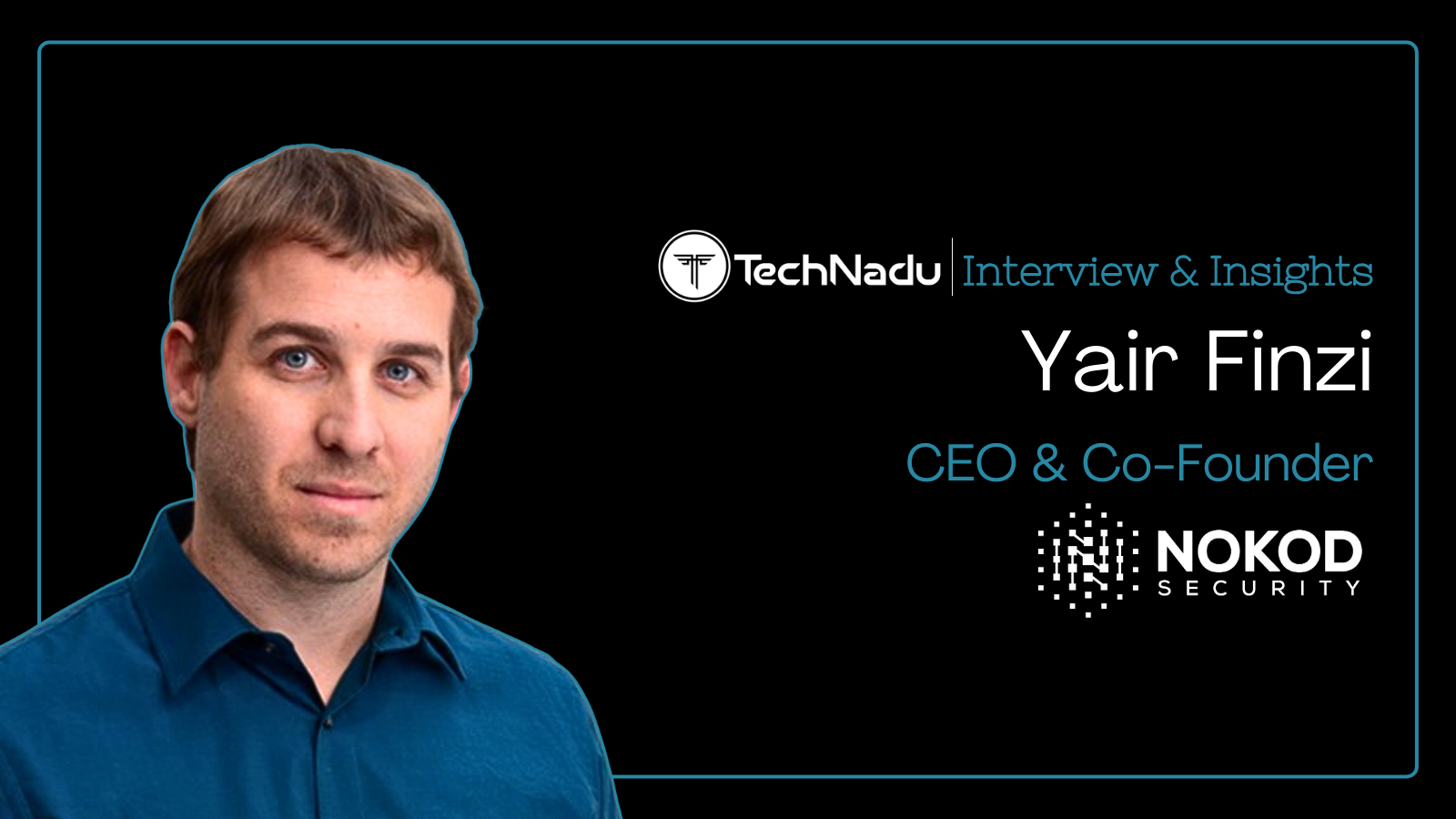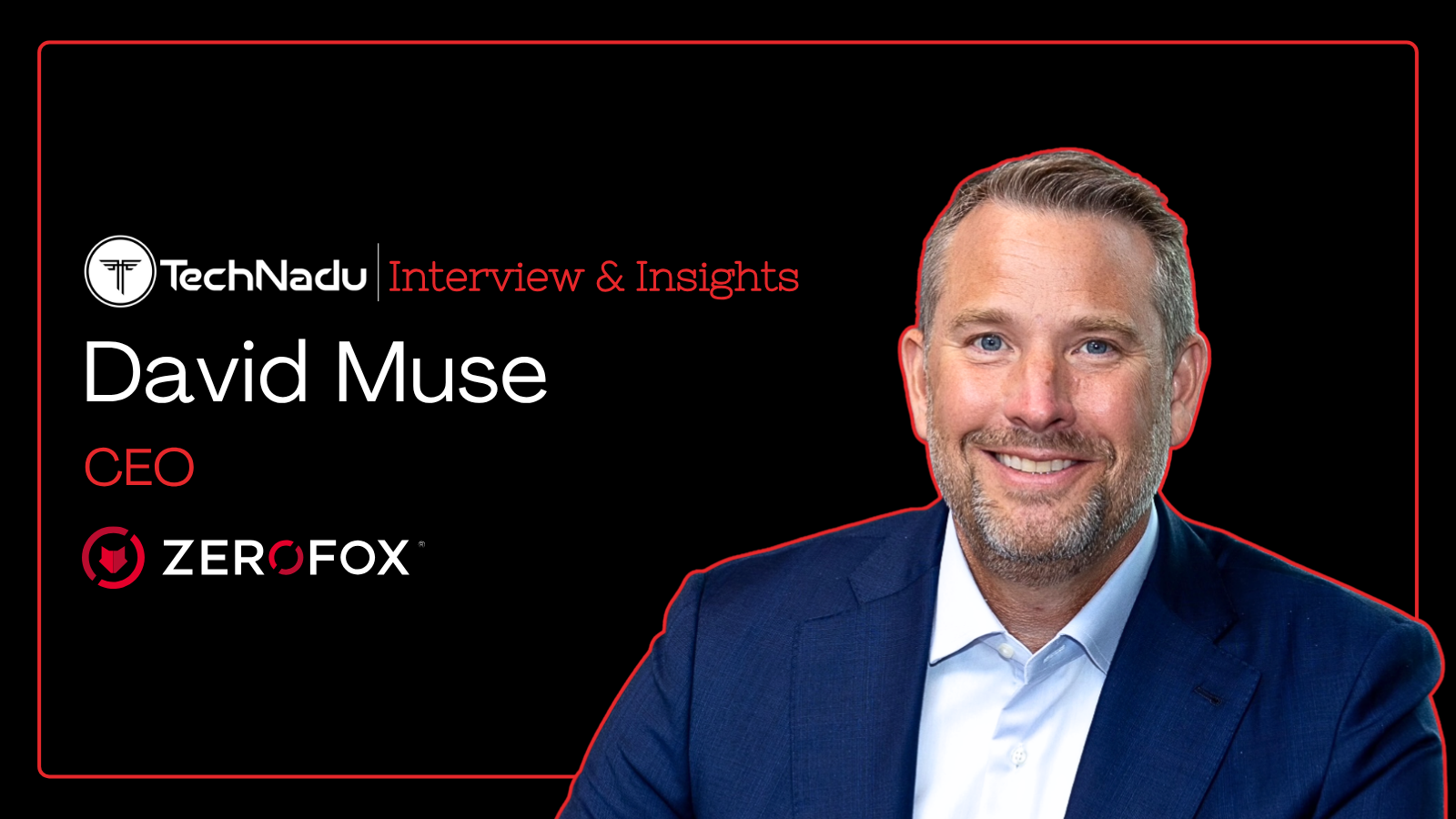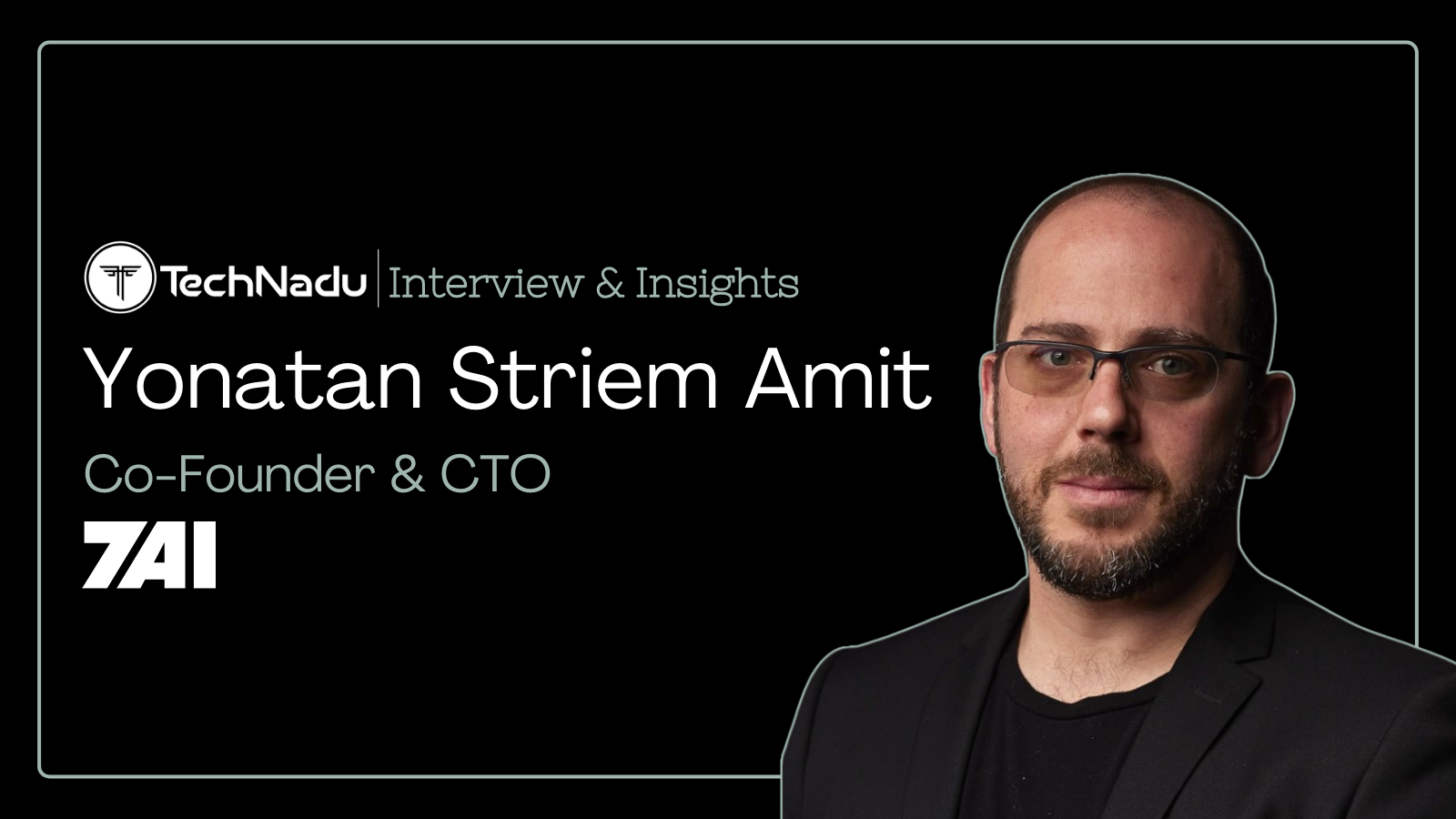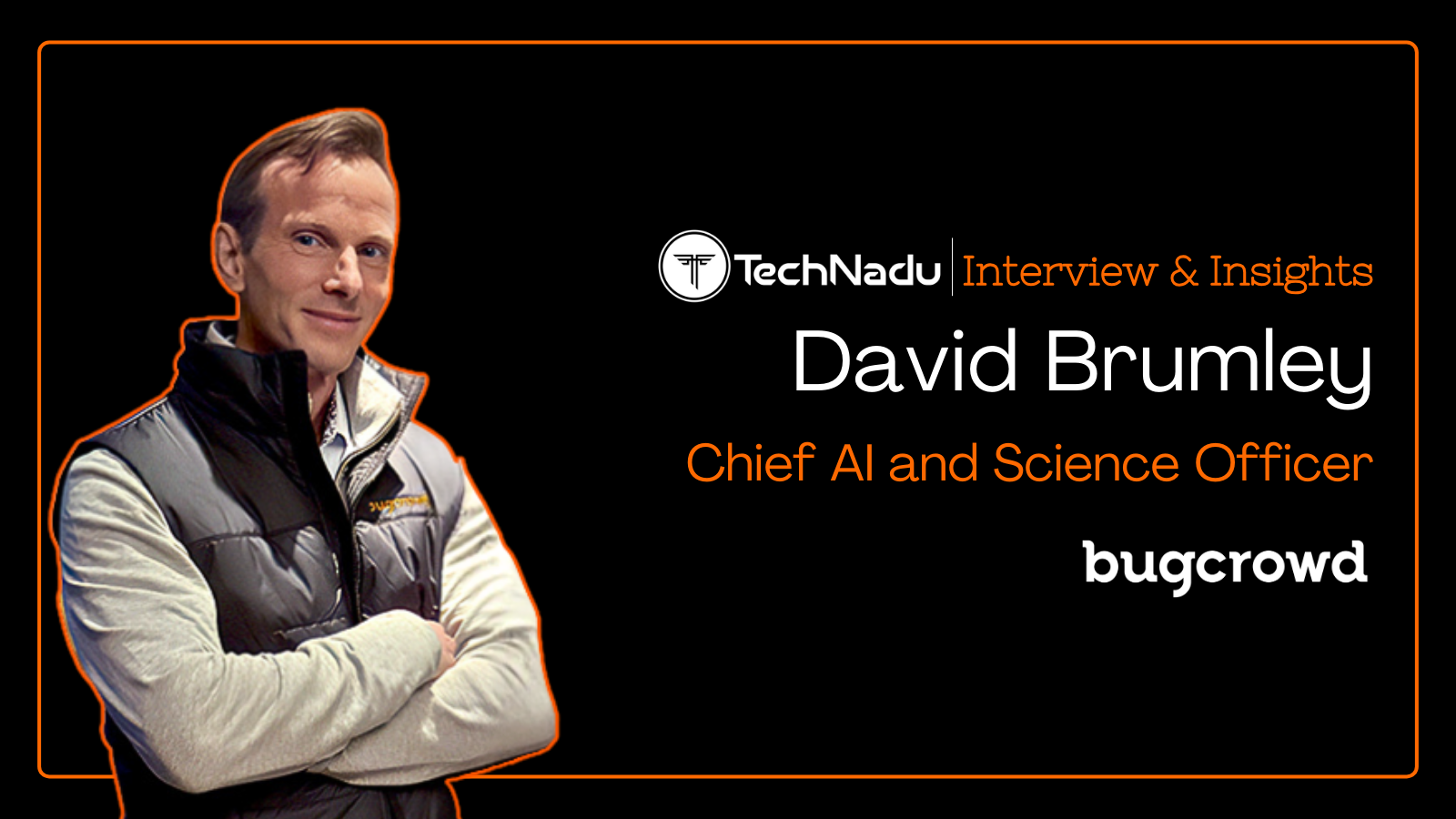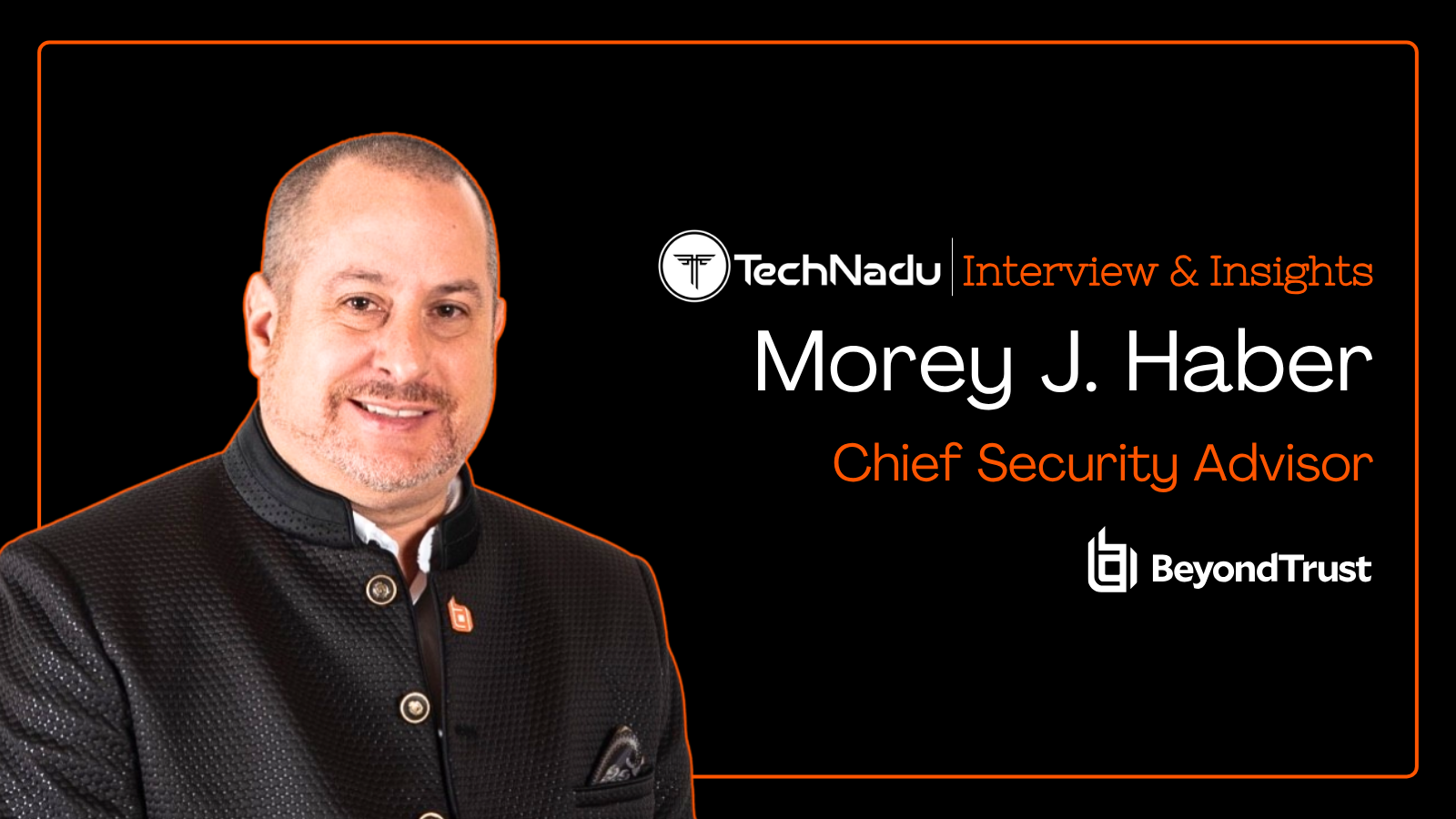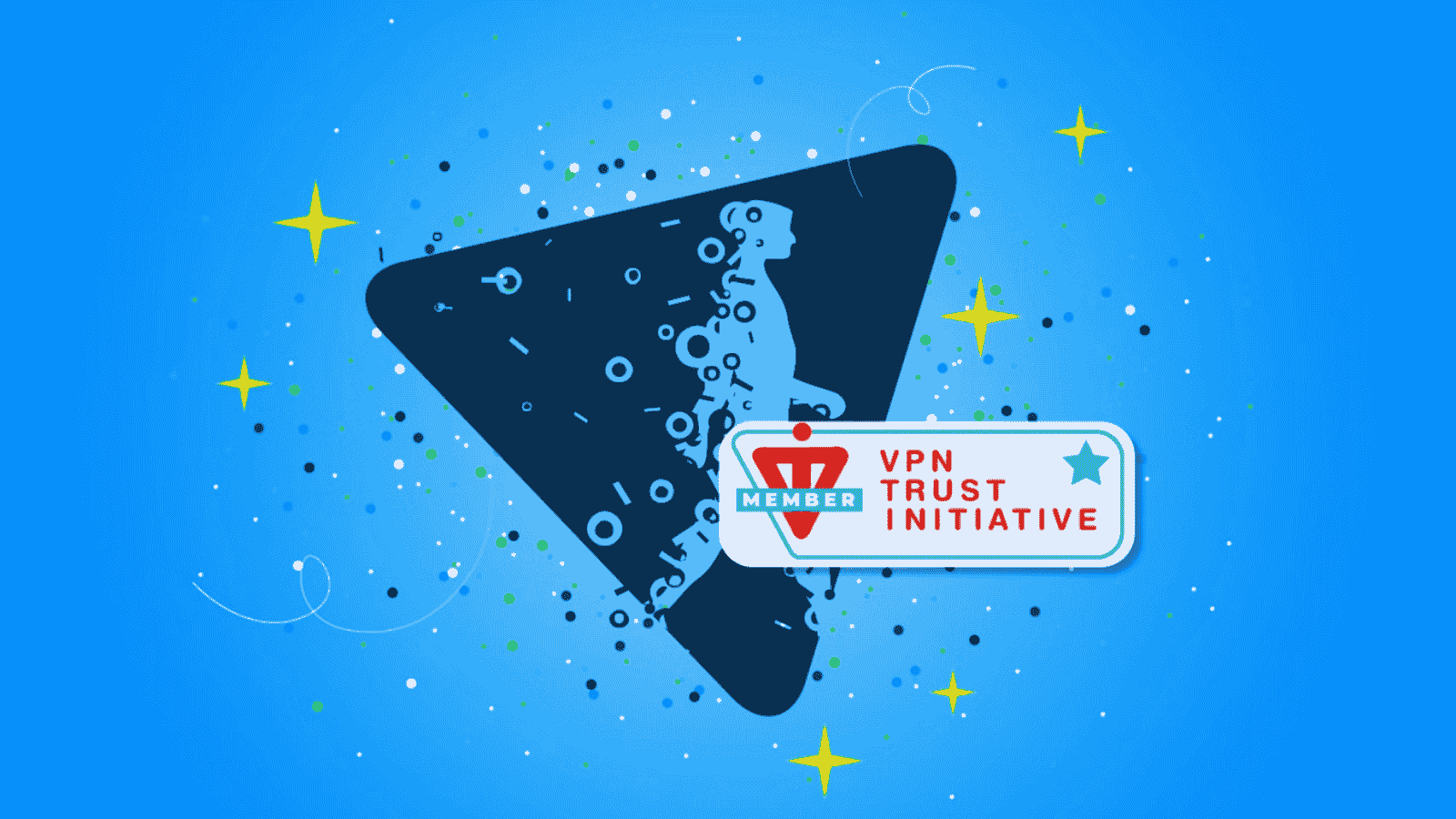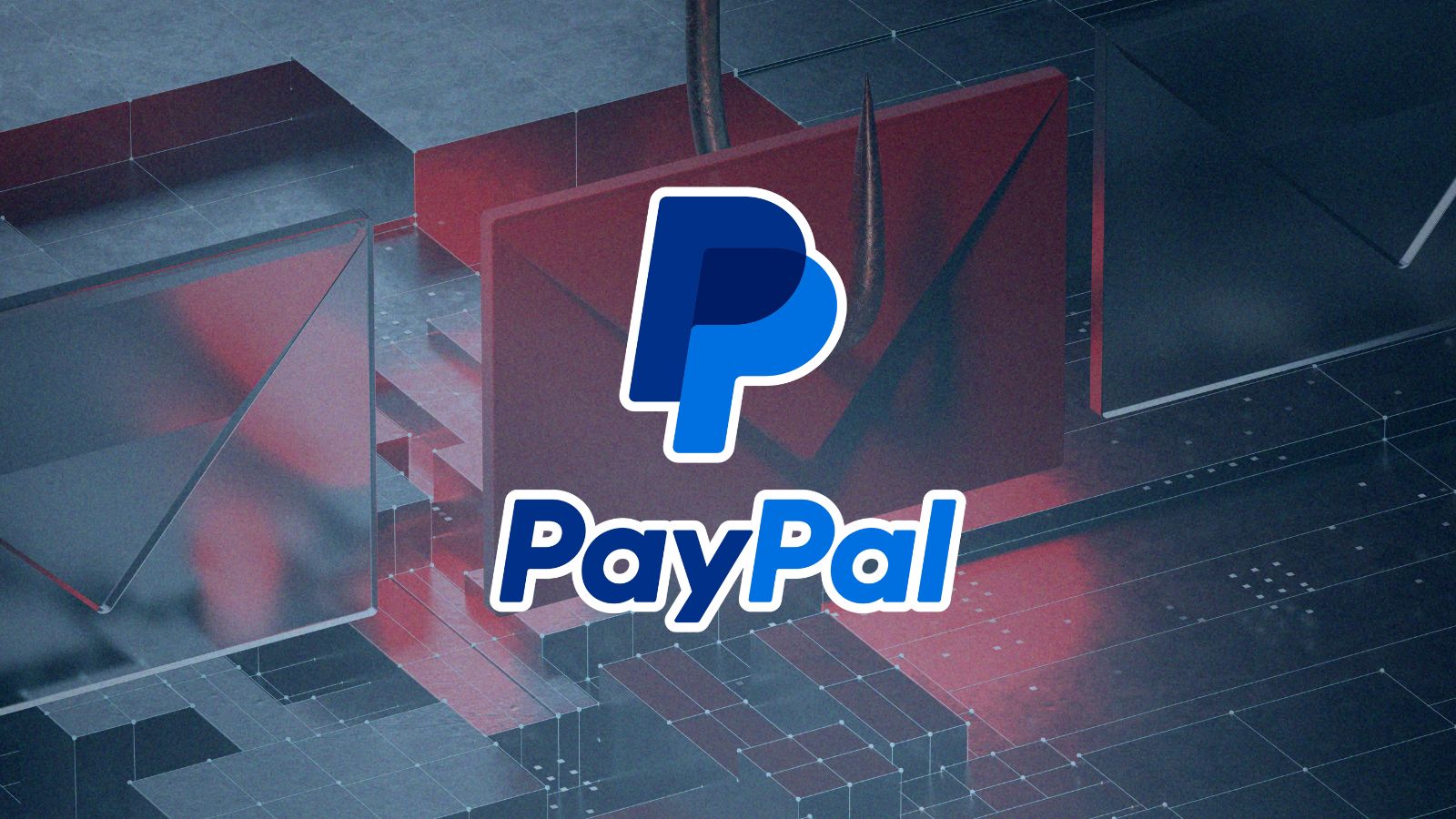
Windscribe on Building a Resilient Internet: Post-Quantum Security, Real-World Censorship Resistance, and Privacy Without Compromise
In this exclusive conversation with TechNadu, Yegor Sak, the CEO and Co-Founder of Windscribe VPN, shares a refreshingly candid look at what it takes to build a privacy platform that doesn’t just keep up with threats, but actively resists them.
From post-quantum encryption and AI-enhanced firewalls to hands-on anti-censorship testing in high-risk regions, Windscribe lays out a roadmap for privacy that’s grounded in real-world resilience and unapologetic independence.
With a growing suite of tools like R.O.B.E.R.T., kernel-level firewalls, and customizable browser extensions, Windscribe isn’t chasing trends; it’s designing for users who face actual surveillance, throttling, and censorship. Their infrastructure-first philosophy, refusal to use virtual server locations, and strict no-logs policy, validated by both audits and legal challenges, positions them as one of the few VPNs that still put principle over profit.
Read on to explore how Windscribe is quietly reshaping the privacy landscape through transparency, performance, and purpose, and why “just press ON” might be the most powerful thing you can do for your digital freedom.
1. Windscribe positions itself as more than just a VPN; it’s a full privacy solution, offering tools like R.O.B.E.R.T., split tunneling, and support for advanced protocols. With that foundation in place, what’s next? What is Windscribe currently building, and what kinds of tools or features can users expect in the near future?
Currently, we're focusing on enhancing performance and usability across our infrastructure. As of July 2025, we've upgraded our network to 102 locations with 10 Gbps uplinks, up from 23 at the end of 2024, incorporating advanced hardware like high-performance processors and increased RAM for consistent user experiences.
On the protocol side, we've transitioned to a kernel-space WireGuard implementation for superior scalability and speeds—users can test this on locations like Montreal - Expo 67, where throughput has been impressive. We're also rolling out OpenVPN Data Channel Offload (DCO) fleet-wide to close performance gaps with WireGuard.
Looking ahead, we're actively developing post-quantum resistant encryption to future-proof against quantum threats, full IPv6 support to enhance connectivity, and FreshScribe features including multi-hop routing and one-click IP switching for greater flexibility and reliability.
Expect more AI-driven optimizations for connection stability, expanded anti-censorship tools like enhanced decoy traffic modes now available on all platforms, and a revamped app interface in beta testing (v2.16.8 as of July 2025).
We're also exploring smarter automation in R.O.B.E.R.T. to dynamically block emerging threats. These developments position Windscribe at the forefront of privacy, balancing innovation with simplicity.
2. We’ve noticed that Windscribe hasn’t taken outside investment and remains independent, even as many VPN providers have been acquired by large corporations. How has that independence shaped the way you run the company, particularly when it comes to building and maintaining trust with users?
Independence has been the cornerstone of Windscribe's operations since day one, allowing us to prioritize user privacy over investor demands or corporate agendas. We're answerable solely to ourselves and our users, with every decision rooted in what's best for them.
Without external funding, we avoid pressures to monetize user data or inflate metrics for quick exits, fostering trust through transparent practices. For instance, our no-logs policy isn't just a claim—it's been validated in an EU court case and through independent audits, distinguishing us from acquired competitors facing potential conflicts of interest.
This autonomy enables investments in physical server infrastructure across over 71 countries, rather than relying on virtual locations that could compromise security. It also allows us to openly critique industry trends, like the overuse of virtual servers, without fear of backlash.
Ultimately, this user-centric approach means decisions are driven by feedback and ethical standards, not boardroom directives, reinforcing trust through consistent delivery on promises like strict no-logs and feature-rich free plans.
3. Your mission speaks to “bringing the internet back to what it was meant to be.” In a world where censorship, surveillance, and mass data collection are accelerating, what role do you see Windscribe playing five years from now? And how do you plan to stay ahead of the curve?
In five years, by 2030, Windscribe envisions itself as a pivotal force in democratizing online freedom, countering escalating censorship and surveillance with robust, accessible tools. As digital borders tighten, VPNs like ours will remain essential for accessing unrestricted information.
We'll expand our role in activism by enhancing anti-censorship protocols, offering more combinations (over 20 ports across 6 protocols) than any competitor, and integrating advanced evasion techniques like decoy traffic to thwart traffic correlation attacks.
To stay ahead, we're investing in R&D for emerging threats, including post-quantum cryptography preparations and AI-resistant blocking via R.O.B.E.R.T. Our network growth—now at 102 high-speed locations (and over 140 total) with physical presence in unique spots like Hawaii and Paraguay—will continue, aiming for broader global coverage.
By maintaining independence, we'll adapt swiftly to regulatory changes without compromising principles, potentially exploring decentralized elements to distribute control. Our goal is an internet where privacy is the default, achieved through innovation, transparency reports, and community-driven features.
4. Windscribe supports a wide range of connection protocols, including IKEv2, OpenVPN, WireGuard, and stealth-focused options like Stealth and WStunnel. Can you walk us through how you decide which protocols to support, and how you go about testing them in regions with heavy internet censorship?
Deciding on protocols at Windscribe involves balancing security, performance, and accessibility, guided by user needs and threat landscapes. First and foremost, we select only secure and open-source protocols, then support as many as possible over numerous ports to maximize users' chances of connecting.
We prioritize open-source, audited options like WireGuard for speed and kernel implementations for scalability, while retaining OpenVPN for compatibility and enhancing it with DCO. Stealth protocols like WStunnel are added to combat deep packet inspection (DPI) in censored regions.
Testing is rigorous: we simulate real-world conditions in virtual environments mimicking censorship in countries like China or Iran, then deploy beta versions to select users for feedback. Our anti-censorship team monitors connectivity using access to residential networks in heavily censored areas, though details remain confidential.
Field tests measure connection success rates, latency, and evasion efficacy across over 20 port combinations. This iterative process ensures reliability, as evidenced by recent anti-censorship mode updates improving connectivity in restricted zones without sacrificing encryption strength.
5. There’s growing concern that quantum computers could one day break modern encryption. Windscribe already uses strong encryption today, but are you exploring post-quantum cryptography or other ways to future-proof user data if quantum threats become a reality?
Absolutely, quantum threats are on our radar, and we're proactively preparing Windscribe for a post-quantum era. While our current encryption (e.g., AES-256 with perfect forward secrecy) is robust, our WireGuard implementation already uses
PresharedKey parameters for an added layer of security, though the PSK exchange isn't fully quantum-secure yet. We're actively integrating post-quantum key encapsulation mechanisms (KEMs) into TLS and OpenVPN protocols, with hybrid approaches combining classical and quantum-resistant algorithms, aligning with NIST standards and EU roadmaps targeting 2030 migrations.
We've begun testing lattice-based cryptography in betas, enhancing symmetric key usage (inherently quantum-resistant), and planning audits. Users can expect phased rollouts starting with high-risk connections, ensuring seamless transitions without performance impacts, as announced in our 2024 updates and progressing into 2025.
6. Windscribe offers a wide range of advanced technical tools—packet size adjustment, proxy gateways, configuration generators, LAN traffic control, port forwarding, and even MAC spoofing. But that depth comes with a challenge: power users may embrace it, while average users risk misconfiguring something and weakening their protection. How do you plan to bridge that usability gap? Will we see more automated “smart” defaults, or perhaps guided setups that adapt to a user’s experience level?
Bridging the usability gap is crucial for Windscribe, as we cater to both novices and experts. The default settings are always secure to minimize risks from the outset. Most users don’t need to do anything in order to use Windscribe; however, the “bells a whistles” are available for those who wish to customize Windscribe to their unique environments, or take advantage of features designed for those on highly adversarial networks like in China, Russia, and Iran.
7. Your firewall feature goes beyond the usual kill switch, cutting off all traffic outside the tunnel at a system level. Can you explain how this works behind the scenes, and why it’s more secure than the approach most VPNs take?
Windscribe's firewall operates at the kernel level, integrating with system network stacks to enforce a default-deny policy: all outbound traffic is blocked unless routed through the VPN tunnel. Behind the scenes, it uses platform-specific APIs—like Windows Filtering Platform or macOS Network Extensions—to monitor and intercept packets in real-time, ensuring no leaks during reconnects or failures.
This is more secure than typical app-level kill switches, which can be bypassed by other processes or system changes, as our method provides comprehensive, OS-integrated protection against accidental exposures. It's battle-tested in high-censorship environments, reducing vulnerability windows significantly.
For a detailed explanation, see our blog post.
8. Windscribe allows users to generate their own configs for OpenVPN, WireGuard®, and IKEv2, which gives them lots of flexibility. But more options can also mean more ways to misconfigure things. How do you ensure that this flexibility doesn’t introduce security risks for users who may not be experts?
To mitigate risks in config generation, Windscribe embeds safeguards like validation checks in our tools, flagging insecure settings (e.g., weak ciphers) before export. Our servers and configs advertise secure cryptographic primitives by default, using the strongest supported options unless a user explicitly specifies otherwise. WireGuard, being an opinionated protocol, cannot be configured with weaker encryption, making it our most recommended choice.
We provide pre-vetted templates with secure defaults and tooltips explaining implications. For non-experts, we recommend app-based connections over manual configs, with warnings in documentation. Regular audits of generated configs ensure compliance with best practices, and user feedback loops refine the system, balancing flexibility with security.
9. Many VPN providers inflate their “servers in X countries” count by using virtual or fake locations. Windscribe claims a physical presence in over 69 countries and appears openly critical of this practice. How can users independently verify where your servers are actually located? Would you consider publishing location audits or transparency reports to set a new industry standard?
Users can verify our physical servers via tools like traceroute or IP geolocation databases, which confirm low-latency connections to claimed locations—unlike virtual ones with inconsistent pings. The methodology is detailed in our blog.
We're critical of virtual inflation, as it misleads on performance and jurisdiction. We already publish transparency reports on our no-logs policy, backed by court validations and audits. While a location audit might seem redundant given independent verifiability, we're open to third-party audits and potentially releasing anonymized infrastructure reports to elevate industry standards, aligning with our 71+ physical countries, including rarities like Kenya and Ecuador.
As it currently stands, Windscribe offers more physical (true) locations than any other VPN out there.
10. We’re entering a phase where AI tools such as web trackers, content filters, and DPI systems are being used to monitor people’s online behavior in real time. Windscribe already blocks much of this at the network level through its firewall features. Looking ahead, do you think real-time AI-based monitoring or behavior-driven detection will be necessary to keep users safe? And how will you balance that without becoming the kind of surveillance system you're trying to protect users from?
Real-time AI monitoring could enhance threat detection, but at Windscribe, we'll approach it cautiously to avoid becoming the very surveillance we're fighting. Our firewall and R.O.B.E.R.T. already handle DPI and trackers network-wide; future iterations might incorporate lightweight, on-device AI for anomaly detection without logging behaviors.
Balance comes from client-side processing, open-source code for scrutiny, and opt-in features—ensuring we protect against surveillance without emulating it. Privacy remains paramount; any AI would be transparent and user-controlled.
However, even without “AI,” Windscribe already has best-in-class anti-malware protection, even better than Quad9, as measured by a 3rd party (see ControlD result, as Windscribe leverages the same filters as our sister company).
11. On the flip side, AI can also play a role internally, supporting customer service, detecting bugs, or managing infrastructure. Is Windscribe using AI behind the scenes in any of these ways? And how do you ensure that internal use doesn’t compromise your commitment to user privacy?
We're leveraging AI internally for infrastructure optimization, like predictive load balancing on our 102 servers, bug detection in code reviews, and features like the Control D AI filter for enhanced threat blocking.
For customer service, AI assists in query routing without accessing personal data. Privacy is safeguarded by anonymizing inputs, running AI on isolated systems, and adhering to our no-logs ethos—ensuring no user data touches these tools. Audits confirm compliance, maintaining our trust commitment.
Our sister company, Control D, just underwent a SOC2 Type 2 audit, which further validates these claims as both companies share the same staff and processes.
12. You maintain a strict no-logs policy and have publicly declined certain government requests due to the lack of stored data. But with countries like India, Australia, and parts of the EU pushing for mandatory data retention laws, how do you plan to uphold that promise both technically and legally? Would you withdraw from these markets rather than comply, or is there a third path forward?
Upholding no-logs amid retention laws involves technical minimalism—we store nothing identifiable, with servers incapable of logging personal information anywhere in the world. Legally, as a Canadian company subject to Canadian laws, we've successfully declined requests due to zero data availability. We operate in these markets until forced out to preserve integrity.
A third path includes advocating through activism, offering obfuscated protocols to users in affected regions, and exploring decentralized models to reduce central pressure.
13. There’s rising interest in decentralized VPNs and peer-to-peer privacy networks. Is this a direction Windscribe is exploring or monitoring? Could decentralization play a role in your future to help avoid centralized control or government pressure?
We're actively monitoring decentralized VPNs for their resilience against central takedowns, though it's not a core focus yet. Elements like peer-assisted routing could enhance our network, avoiding single points of failure and aligning with evading government pressure, but we'd ensure security via audits.
Future hybrids might integrate decentralization selectively, maintaining our physical infrastructure's reliability. For now, we remain committed to our centralized model for optimal performance and control.
14. While Windscribe offers many advanced features, some users simply want to browse privately or stream content without complexity. How do you ensure the app stays accessible for those users without overwhelming them with technical settings?
Accessibility is key; our apps default to a "one-click connect" mode, hiding advanced options behind toggles. New betas feature streamlined UIs with smart defaults optimizing for streaming or browsing. Most users don’t need to do anything other than press the big ON button.
15. Your browser extension offers features like Cookie Monster, Split Personality, WebRTC Slayer, and more, which go far beyond the basics. Are new features in development? And how do you help less tech-savvy users understand and benefit from everything the extension offers?
New extension features in development include enhanced AI blockers for trackers, quantum-ready encryption, and anti-fingerprinting on MV3 (which Google notably tried to block—read more about it in this post).
For less tech-savvy users, we provide in-extension explanations, tooltips, a "Beginner Mode" that auto-enables essentials with simple sliders, plus video guides and documentation to demystify benefits. We announce features clearly, ensuring users can leverage them without deep technical knowledge.
16. Windscribe’s free plan, 10GB per month with no credit card, plus referral bonuses, is among the most generous in the industry. But maintaining secure infrastructure, especially with custom tools like R.O.B.E.R.T. and your own servers, comes at a cost. How do you sustain the free offering long-term without sacrificing security or performance? And how do you ensure free users aren’t subsidizing Pro users' privacy?
Sustainability comes from efficient scaling via our independent model and owned infrastructure. Pro users subsidize free users, funding the ecosystem. Free users benefit from the same security as Pro, with limits preventing abuse, and they connect to dedicated free servers—never overlapping with Pro servers, even in the same location.
Revenue from Pro subscriptions drives awareness and conversions without compromising privacy or performance for anyone.
17. Some VPNs that promote free plans rely on invasive logging or reselling user data. Windscribe states it maintains a strict no-logs policy even for free users. How do you ensure the free service remains both private and sustainable, without quietly monetizing users in the background?
Our no-logs policy applies universally, verified by audits and court tests. Sustainability relies on Pro upgrades and referrals, not data sales, with Pro users subsidizing the free tier. Technical enforcement via minimal data handling keeps it private, and transparency reports confirm no hidden monetization.
18. Windscribe’s pricing model is one of the most flexible in the industry, ranging from the free plan to the Build-A-Plan option. With that versatility in mind, can you walk us through how Windscribe approaches billing transparency? Specifically, how do you handle things like auto-renewals, refunds, and making sure users know exactly what they’re paying for before they commit?
Transparency is non-negotiable: pricing pages detail all costs upfront with no hidden fees. Users are informed upfront that plans auto-renew at the same rate, with no increases, and one-click cancellations. Refunds follow a clear 7-day policy for unused services. Build-A-Plan previews totals interactively, ensuring informed commitments.
19. With growing VPN restrictions, biometric tracking, and frequent data breaches, what are your top three tips for using VPNs safely and ethically in 2025 and beyond?
Choose audited, no-logs providers like Windscribe to avoid risks. Use obfuscated protocols in restricted areas and enable firewalls and network-level malware and tracker blocking. Combine with good habits like multi-factor authentication, and avoid unethical uses like illegal activities—focus on privacy, not anonymity for harm.


